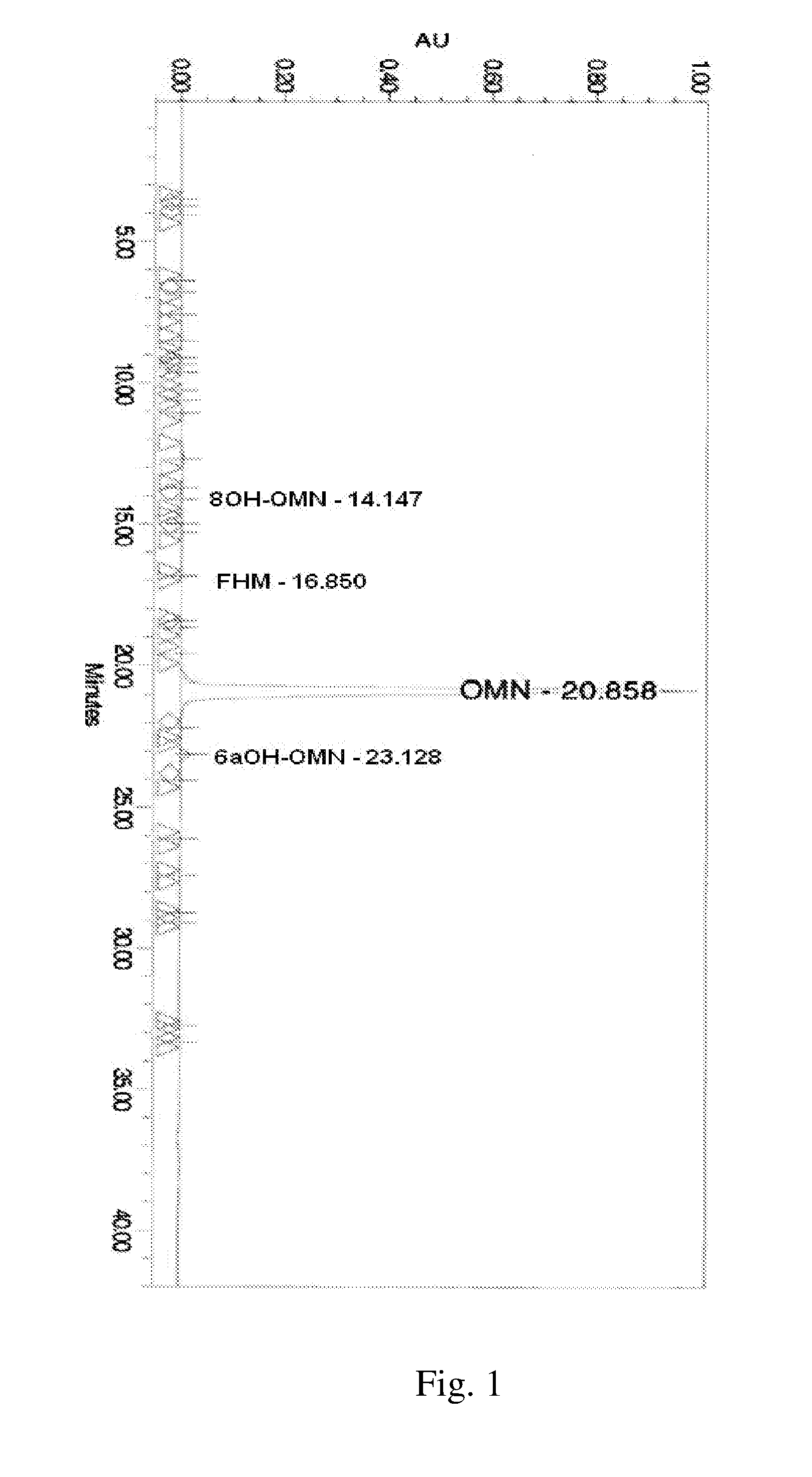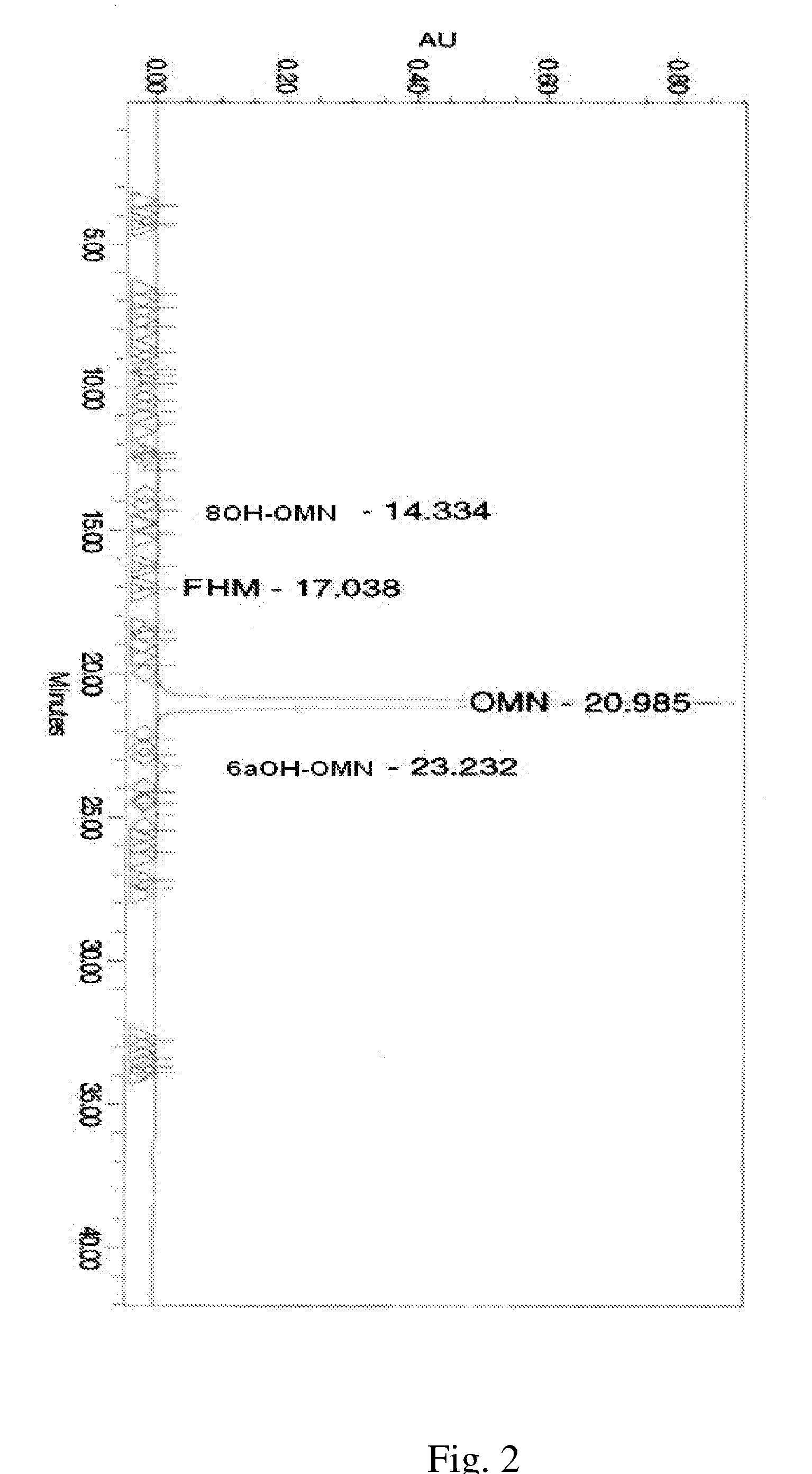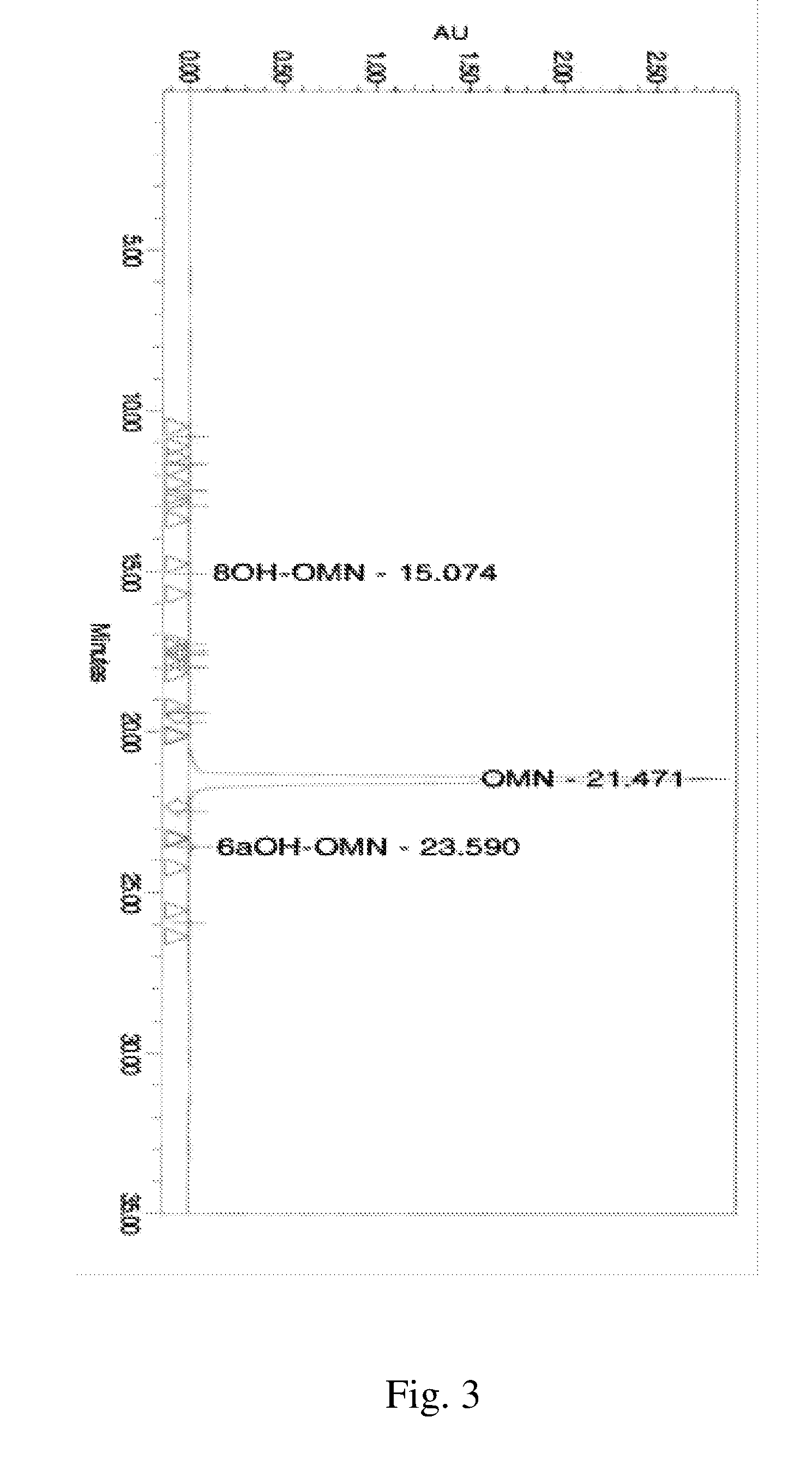Process for improved oxymorphone synthesis
a technology of oxymorphone and synthesis, which is applied in the direction of drug compositions, organic chemistry, nervous disorders, etc., can solve the problems of time-consuming and ineffective volume, and undesired by-products in the final pharmaceutical composition or final dosage form, etc., to achieve the effect of reducing the amount of 8-hydroxyoxymorphon
- Summary
- Abstract
- Description
- Claims
- Application Information
AI Technical Summary
Benefits of technology
Problems solved by technology
Method used
Image
Examples
synthetic example 7
Preparation of 14-Hydroxymorphinone Sulfate
[0656]
[0657]14-Hydroxymorphinone sulfate was prepared as follows:
[0658]1. Into a 100 mL reaction vessel equipped with a temperature probe, overhead stirrer and reflux condenser, oripavine (3.02 g, 10.2 mmol) was charged as a slurry in deionized water (9 mL).
[0659]2. The reaction mixture was stirred at 300 rpm, while maintaining an internal temperature of 20° C.
[0660]3. Into the reaction was added 88% formic acid (6 mL, 139.9 mmol), and the solids readily dissolved into solution. During the formic acid addition, the temperature of the reaction mixture increased to 30° C.
[0661]4. After the solution temperature had cooled to 20° C., 35% hydrogen peroxide (1.06 mL, 15.8 mmol) and sulfuric acid (0.45 mL, 8.15 mmol) were added to the reaction.
[0662]5. The reaction was stirred (300 rpm) at 20° C. for 16 hours.
[0663]6. Stirring of the mixture was reduced to 75 rpm and the mixture was cooled to 0° C. over 1 hour. Solids began precipitating out of so...
synthetic example 8
Preparation of 14-Hydroxymorphinone Sulfate
[0671]
[0672]14-Hydroxymorphinone sulfate was prepared as follows:
[0673]1. Into a 100 mL jacketed vessel equipped with a temperature probe, overhead stirrer and an addition funnel, oripavine (20.0 g, 67.4 mmol) was charged as a slurry in deionized water (30 mL).
[0674]2. The jacket temperature for the vessel was set to 20° C. and the slurry was stirred at 300 rpm.
[0675]3. 88% formic acid (10 mL, 232 mmol) was added into the reaction mixture. The solids readily dissolved into solution upon this addition. During the formic acid addition, the temperature of the reaction mixture increased to 30° C.
[0676]4. Sulfuric acid (2.0 mL, 36 mmol) was added to the solution, and the solution was stirred at 300 rpm.
[0677]5. After the solution temperature had cooled below 25° C., 35% hydrogen peroxide (7.00 mL, 81.4 mmol) was added to the reaction over 15 minutes, using the addition funnel.
[0678]6. After the peroxide addition was complete, an additional 3 mL ...
example 11
Example 11A
[0718]HPLC conditions for Examples 1 to 10 and 12 to 15 were as follows:[0719]Instrument: Waters 2695 HPLC system with Waters 966 Photodiode Array Detector[0720]Column: Waters XBridge C18 (150×3.0 mm; 3.5 μm)[0721]Mobile phase:[0722]Solution A: 10 mMol (pH=10.2) ammonium bicarbonate in water[0723]Solution B: methanol[0724]Flow rate: 0.30 mL / min[0725]UV detection: 292 nm[0726]Injection volume: 10 μl of a 1 mg / mL sample solution. Samples were prepared by weighing 10±0.5 mg of sample and quantitatively transferring it to a 10 mL volumetric flask. The solids were dissolved in a 80:20 mixture of 0.085% phosphoric acid in water:methanol.[0727]Column temperature: 30° C.[0728]Run Time: 42 minutes
[0729]Gradient Conditions (Linear Concentration Changes):
TABLE 1TimeFlow% A% Binitial0.3090.010.0 1.000.3090.010.0 5.000.3078.022.016.000.3060.040.022.000.3053.047.026.000.3048.052.031.900.3025.075.032.200.3090.010.042.000.3090.010.0
[0730]A representative HLPC chromatogram show...
PUM
| Property | Measurement | Unit |
|---|---|---|
| Fraction | aaaaa | aaaaa |
| Weight | aaaaa | aaaaa |
Abstract
Description
Claims
Application Information
 Login to View More
Login to View More - R&D
- Intellectual Property
- Life Sciences
- Materials
- Tech Scout
- Unparalleled Data Quality
- Higher Quality Content
- 60% Fewer Hallucinations
Browse by: Latest US Patents, China's latest patents, Technical Efficacy Thesaurus, Application Domain, Technology Topic, Popular Technical Reports.
© 2025 PatSnap. All rights reserved.Legal|Privacy policy|Modern Slavery Act Transparency Statement|Sitemap|About US| Contact US: help@patsnap.com



